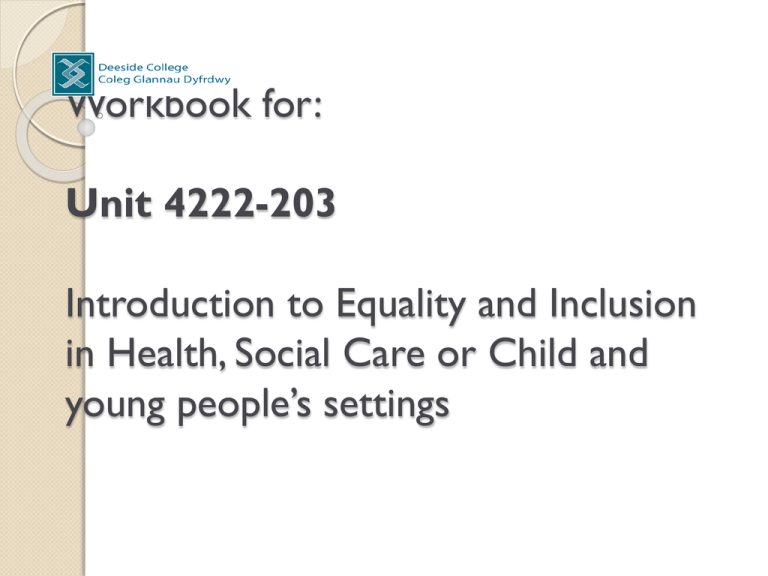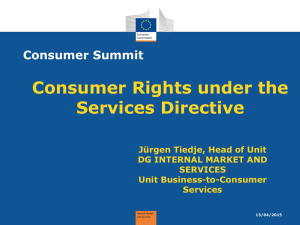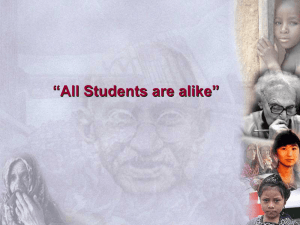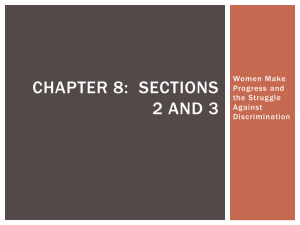
Workbook for:
Unit 4222-203
Introduction to Equality and Inclusion
in Health, Social Care or Child and
young people’s settings
What is the human rights act?
What rights does the Human
Rights Act protect?
The right to life – protects your life, by law. The state is required to investigate suspicious
deaths and deaths in custody.
The prohibition of torture and inhuman treatment – you should never be tortured or
treated in an inhuman or degrading way, no matter what the situation.
Protection against slavery and forced labour – you should not be treated like a slave or
subjected to forced labour.
The right to liberty and freedom – you have the right to be free and the state can only
imprison you with very good reason – for example, if you are convicted of a crime.
The right to a fair trial and no punishment without law - you are innocent until proven
guilty. If accused of a crime, you have the right to hear the evidence against you, in a court
of law.
Respect for privacy and family life and the right to marry – protects against unnecessary
surveillance or intrusion into your life.You have the right to marry and raise a family.
Freedom of thought, religion and belief – you can believe what you like and practice your
religion or beliefs.
Free speech and peaceful protest – you have a right to speak freely and join with others
peacefully, to express your views.
No discrimination – everyone’s rights are equal.You should not be treated unfairly –
because, for example, of your gender, race, sexuality, religion or age.
Explain what is Diversity?
Diversity- Dictionary.com
1.the state or fact of being diverse;
difference; unlikeness.
2.variety; multiformity.
3.a point of difference.
Diversity is the described as variety, a
range of different things
Explain Diversity
Discuss examples of Diversity in your
work place, e.g. the Welsh language.
Discuss – what is Discrimination?
In your groups discuss what is
discrimination and who may this affect?
Discrimination-oxford
dictionary
the unjust or prejudicial treatment of
different categories of people.
Describe the term Inclusion
According to Ask.com
◦ The action or state of including or of being
included within a group or structure: "the
inclusion of handicapped students".
◦ A person or thing that is included within a
larger group or structure.
What is inclusion?
Inclusion is about ALL of us
Inclusion is about living full lives - about learning to live together.
Inclusion makes the world our classroom for a full life.
Inclusion treasures diversity and builds community.
Inclusion is about our 'abilities' - our gifts and how to share them.
Inclusion is NOT just a 'disability' issue.
Inclusion.com creates & shares tools, resources, capacities, so all can live full lives.
Inclusion.com is for citizens: educators, families, individuals, organizations - all of us.
Describe, how you and your work setting
promote inclusivity.
What is the equality act?
What does this mean?
Equality Act
2010
The protected characteristics
Age
Disability
Gender reassignment
Marriage and civil partnership
Race
Religion or belief
Sex
Sexual orientation
The Sex Discrimination Act
1975
This prohibits discrimination on grounds
of gender, and marital status in
employment, education and the provision
of goods and services and on grounds of
gender reassignment in the field of
employment. It applies in England,
Scotland and Wales.
The Race Relations
(Amendment) Act 2000
This prohibits discrimination on grounds
of race, colour, nationality and ethnicity in
employment, education and provision of
goods and services. It applies in England,
Scotland and Wales.
Religion
The Employment Equality (Religion or
Belief) Regulations 2003 serve to prohibit
discrimination on the grounds of 'religion
or belief'. It is also unlawful to
discriminate against a person for not
having a specific religion or belief.
Direct and indirect
discrimination
These prohibit unjustified direct and
indirect age discrimination, and all
harassment and victimisation on grounds
of age. The regulations apply across
England, Scotland and Wales, whatever the
size of the organisation, whether in the
public or the private sector.
PROHIBITED CONDUCT
Discrimination
Direct discrimination
Indirect discrimination
Combined discrimination: dual characteristics
Discrimination arising from disability
Gender reassignment discrimination: cases of
absence from work
Pregnancy and maternity discrimination: nonwork cases
Pregnancy and maternity discrimination: work
cases
Age-The Employment Equality
(Age) Regulations 2006 meant
Ban age discrimination in terms of
recruitment, promotion and training
Ban unjustified retirement ages of below
65
Remove the current age limit for unfair
dismissal and redundancy rights.
Disability
An employer/ Service provider may be
discriminatory if it fails to make
reasonable adjustments to its
employment arrangements or to the
physical features of its premises and this
results in the disabled person being
substantially disadvantaged.
Sexual orientation
The legislation covers homosexuals,
lesbians, heterosexuals and bisexuals but
does not cover sexual practices, such as
sado-masochism. Transgender people are
protected by separate regulations. It also
protects those who are subjected to
discrimination based on association with,
for example, gay friends or colleagues. The
regulations prohibit direct and indirect
discrimination as well as harassment.
Discuss work sheet 1
Read the following scenarios and decide
in your groups which legislation is
applicable to the discrimination examples.
TASK SHEET 1
Example
A project for young people which runs evening sessions for teenagers decides to exclude all Rastafarians
after a violent incident involving two rival groups. However, the two groups involved in the violence
contain only half of the Rastafarian membership of the evening sessions.
Example
In a neighbourhood that includes a large Jewish community, a local community group provides lunches for
elderly people but they say that because their supplier cannot provide kosher meals they are unable to
provide meals for their Jewish customers.
Example
A training project ran a seminar for unemployed people to help them prepare their CVs. Mehmet, a
Muslim delegate, wrote to complain that he was not excused from the seminar to go and observe his
afternoon prayers. The next time Mehmet applied to attend the seminar, he was told that there were no
places left but he later found out that his friend had been given a place, even though he had applied later
than Mehmet. Mehmet argued that this was victimisation because he had made a complaint related to his
religion.
Example
A Baptist church was asked by a lesbian and gay support group if they could use its hall for training
sessions for new volunteers. The church said that it could not let them use the hall because its doctrine
rejects homosexuality and it would cause upset to a significant number of its members.
Discuss what could be classed as
discrimination in your work place, use the
Human Rights Act.
What affect has the code of practice on
discrimination?
Code of Practice for
Social Care Workers
Social care workers must:
1. Protect the rights and promote the interests of service
users and carers.
2. Strive to establish and maintain the trust and confidence of
service users and careers.
3. Promote the independence of service users while
protecting them as far as possible from danger or harm.
4. Respect the rights of service users whilst seeking to
ensure that their behavior does not harm themselves or
other people.
5. Uphold public trust and confidence in social care services.
6. Be accountable for the quality of their work and take
responsibility for maintaining and improving their knowledge
and skills.
What is stereotyping ?
Describe what can be classed as
stereotyping
Describe how the following slides images,
could be stereotyped.
Discuss
how does equal opportunity and
inclusiveness reduce the likelihood
of discrimination ?
Homework
Complete a reflective account to explain
how practices in your work place support
equality and inclusion to reduce the
likelihood of discrimination.
Answer the following task sheet in identifying
Discrimination and discuss how you would
work in a way to encourage changes
TASK SHEET 4
Scenario You take a service user to the Doctors and he speaks directly to yourself,
instead of the service user.
An issue has been raised about the Christmas Off duty.
The Muslim staff have all been asked to work all the shifts, without volunteering.
How is this discrimination?
A service user has asked to go for a walk and is assisted to do so. Another service
user who is suffering from dementia has also asked to go for a walk. However he
has a history of absconding and is not allowed to go.
Homework
Where can you go for help








